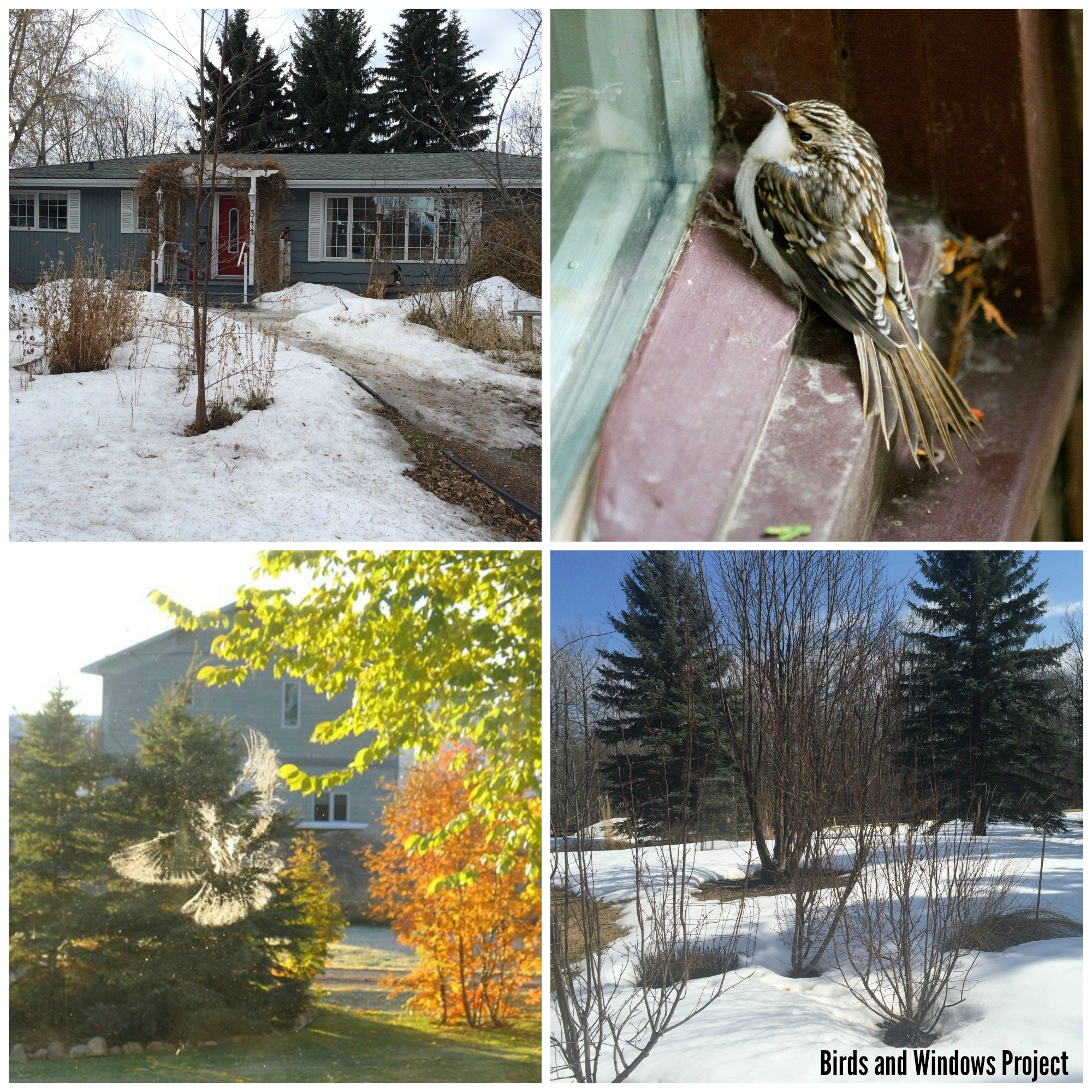Here’s the second post looking at the results of the Birds and Windows project! Here’s a link if you missed the first one. Today I’m focusing on the factors affecting collisions at residential houses.
In the past there have only been four studies looking at why one house has more collisions than another and each of these studies have focused on different aspects of window collision risk. These studies did not look at the impacts of multiple factors, including window type and yard attributes at the same time.
We propose the factors influencing bird-window collisions at houses be categorized based on scale into four levels: neighbourhood type, yard conditions, house attributes, and window types. Understanding the level that has the greatest impact on bird-window collision rates has implications for prioritizing mitigation options
The Birds and Windows citizen science project was developed to gain a better understanding of the factors affecting collisions at residential houses at all four levels with our main objective to focus on understanding the relative importance of variables at each of our four levels.

Since the launch of the Birds and Windows project there have been 34114 observations entered from homeowners in Alberta. Of these there were 930 collisions and 102 fatalities.
Of the collisions in Alberta, 497 could be identified to species or family. There were collisions from 53 different species. Birds that frequent feeders accounted for 295 of the identified collisions and 202 collisions were by those birds that do not visit feeders.
The most common species were Black-capped chickadees (n=50), American robins (n=40), Dark-eyed juncos (n=31), Bohemian waxwings (n=30), Cedar waxwings (n=24), and Black-billed magpies (n=22). There were a number of birds categorized as sparrows, chickadees, or waxwings which could not be identified further and as a result the numbers for Black-capped chickadees, House sparrows and both waxwing species are likely higher than reported above.

The factors identified at the yard level were the best explanation for the number of collisions. Those at the neighbourhood level were a close second.
Overall, the 3 factors identified as having the largest effect on bird-window collisions was whether the house was in an urban or rural location, the height of vegetation in the front yard of a house and whether or not there was a bird feeder present within 10 m of the house. There was additionally a large effect of seasonality on collision risk.
At the neighbourhood level there was a strong effect of both urban/rural location and season. Rural homes during the fall had a daily collision risk 10.84 times greater than urban houses in the winter. Those houses more likely to have a collisions where rural homes during spring and fall migration.
At the yard level the presence of a bird feeder, the height of vegetation in the front yard, whether the yard was considered developed or undeveloped and season had the largest effect on collision risk. Houses with a feeder in the fall had 5.96 times more collisions than a house without a feeder in the winter. Those houses more likely to have a collision were homes with a bird feeder, during spring and fall migration, houses with vegetation in the front yard 2 storeys or higher and houses in an undeveloped landscape.
At the house level the number of windows, the year the house was build, the building type and season had the strongest effect on collision risk. Those houses more likely to have a collision include houses with more than 10 windows, houses built before 1970, single-attached houses and during spring and fall migration.
At the window level whether or not vegetation was reflected in the window, the side of the house the window was on, the direction the window faced and the type of glass of the window were the best predictors of a collision. Those windows more likely to be a collision window include windows that reflect vegetation, windows on the front of a house, windows facing south and Low-E and UV glass windows. 
In looking at differences between those birds that visit feeders and those birds that do not, the presence of a bird feeder increased collision risk 6.13 times for feeder birds and 2.96 times for non-feeder birds. This suggests that similar factors are affecting both groups. As well, those homes with bird feeders are more likely to have urban gardens and have created bird-friendly regions at their homes which are attracting non-feeder birds.
These results are generally consistent with other studies which have focused on a handful of the factors we have outlined. Factors associated with vegetation and increasing bird abundance have the largest effect on collision risk. Reductions to vegetation cover and abundance might reduce collisions however homeowners are not likely wanting to reduce the vegetation and number of birds in their yard. Instead we suggest we shift our focus towards developing the most effective window deterrents.
